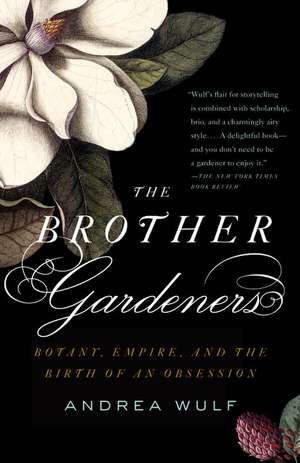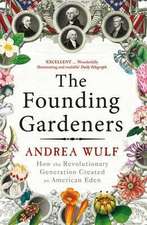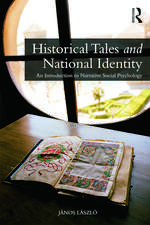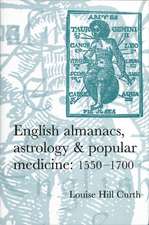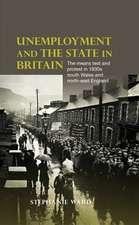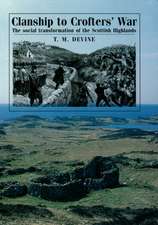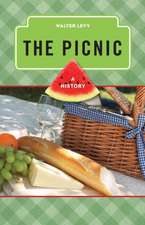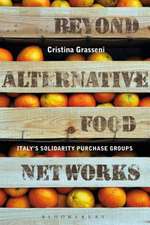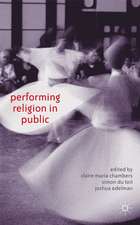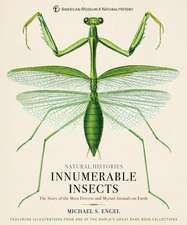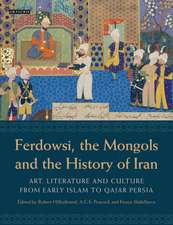The Brother Gardeners: Botany, Empire and the Birth of an Obession
Autor Andrea Wulfen Limba Engleză Paperback – 28 feb 2010
In 1733, colonial farmer John Bartram shipped two boxes of precious American plants and seeds to Peter Collinson in London. Around these men formed the nucleus of a botany movement, which included famous Swedish botanist Carl Linnaeus; Philip Miller, bestselling author of The Gardeners Dictionary; and Joseph Banks and David Solander, two botanist explorers, who scoured the globe for plant life aboard Captain Cook’s Endeavor. As they cultivated exotic blooms from around the world, they helped make Britain an epicenter of horticultural and botanical expertise. The Brother Gardeners paints a vivid portrait of an emerging world of knowledge and gardening as we know it today.
| Toate formatele și edițiile | Preț | Express |
|---|---|---|
| Paperback (2) | 60.96 lei 26-32 zile | +25.15 lei 10-14 zile |
| CORNERSTONE – 5 feb 2009 | 60.96 lei 26-32 zile | +25.15 lei 10-14 zile |
| Vintage Books USA – 28 feb 2010 | 120.62 lei 3-5 săpt. |
Preț: 120.62 lei
Nou
Puncte Express: 181
Preț estimativ în valută:
23.08€ • 24.04$ • 19.51£
23.08€ • 24.04$ • 19.51£
Carte disponibilă
Livrare economică 15 februarie-01 martie
Preluare comenzi: 021 569.72.76
Specificații
ISBN-13: 9780307454751
ISBN-10: 0307454754
Pagini: 354
Ilustrații: 16 PP. COLOR/21 B&W ILL IN TEX
Dimensiuni: 141 x 202 x 20 mm
Greutate: 0.36 kg
Editura: Vintage Books USA
ISBN-10: 0307454754
Pagini: 354
Ilustrații: 16 PP. COLOR/21 B&W ILL IN TEX
Dimensiuni: 141 x 202 x 20 mm
Greutate: 0.36 kg
Editura: Vintage Books USA
Notă biografică
ANDREA WULF was born in India and moved to Germany as a child. She trained as a design historian at London’s Royal College of Art . She is also the author of The Invention of Nature: Alexander Von Humboldt's New World and Founding Gardeners: The Revolutionary Generation, Nature, and the Shaping of the American Nation and is coauthor (with Emma Gieben-Gamal) of This Other Eden: Seven Great Gardens and 300 Years of English History. She has written for The Sunday Times (London), the Wall Street Journal and The Financial Times, and she reviews for numerous newspapers, including The Guardian, The Times Literary Supplement, and The Mail on Sunday. She appears regularly on BBC television and radio. The Brothers Gardeners was longlisted for the Samuel Johnson Prize in 2008.
Extras
1
"Forget not Mee & My Garden"
There ought to be gardens for all the months in the year,
in which severally things of beauty may be then in season.
FRANCIS BACON, "Of Gardens," 1625
The first three months of the year were always the busiest time for the cloth merchant Peter Collinson, for it was then that the ships from the American colonies arrived in London. But on this January morning in 1734 he was concerned not with the arrival of reels of wool or bales of cotton but with an altogether different cargo. Awaiting him at Custom House, down by the docks, were two boxes of plants that, for Collinson, were the most exciting piece of merchandise he had ever received.
As he hurried towards the Thames from his Gracechurch Street office, in the financial centre of the city, Collinson could see the clusters of tall masts above the rooftops and hear the cries of stevedores as they unloaded precious goods from the holds. The stretch of the river between London Bridge and the Tower was the main harbour of London and more than two thousand vessels-besides barges, wherries and ferries-created "a forest of ships." Moored side-by-side, the vessels left only narrow channels for the barges between them, and the wharves, quays and stairs that lined the river were so crowded it was hard to move. These ships brought tea and silk from China; sugar and coffee from the West Indies; spices from the East Indies and corn and tobacco from the American colonies. The river was, as one visitor said, the "foster-mother" of London, pumping money, goods and life into a city which more than half a million people called their home-the largest metropolis in the world.
Collinson was one of the many merchants benefiting from the huge expansion of trade that had occurred since the accession of King George II. Soon to be forty, he had inherited the cloth business from his father a few years earlier and was involved in shipping cloth all around the globe, with his main market in the American colonies. Between the 1720s and the 1760s exports to the American colonies quadrupled, while those to the West Indies multiplied almost by seven, providing untold wealth to a new class of businessman. As Daniel Defoe wrote, "our merchants are princes, greater and richer, and more powerful than some sovereign princes."
And, as London grew, so too did the trade to be done within the city. In one year alone, Londoners consumed nearly 2 million barrels of beer, 15 million mackerel and 70,000 sheep. London was one vast consumer market and the streets thronged with trade. Not far from Collinson's office were the shops of Cheapside and Fleet Street, whose large windows created the impression that they were "made entirely of glass." Sweets, cakes and fruits were stacked in precarious towers, and even the apothecaries' colourful potions were lavishly displayed to entice the passers-by. Tourists wandered for hours, admiring what one called "the choicest merchandise from the four quarters of the globe." When dusk settled on the city, thousands of candles threw a soft light on to glittering jewellery, polished silverware and framed engravings. Lanterns fastened to the front of each house created a luminous necklace along the streets, giving London a permanently festive atmosphere.
Although Collinson was not one of the richest merchants in the city, he was very comfortably off. He lived with his beloved wife in a "little cottage" in the "pleasant village" of Peckham.* It was "the most Delightfull place to Mee," he said, where he could retreat from the "hurrys of town," and where he could indulge the great passion of his life: gardening. Collinson had been fascinated by the natural world from an early age, when he wandered the garden of his grandmother, full of topiary and "curious plants." His grandmother, who had brought him up, had encouraged his enthusiasm and taken him on many trips to the nurseries around London, in particular Fairchild's little plot in Hoxton where the adolescent Collinson had gazed in awe at the exotic world contained in the hothouses. As he got older, his interest in nature only increased. "I must be peeping about," he wrote, confessing that nature haunted him everywhere he went.
During the week, though, Collinson was forced to attend to his business in the City, where he felt like "a Cockney who Lives in a Wilderness of Chimneys." His main trade was with the colonies in North America, in particular with Pennsylvania, which, due to its rapid rise in population, was one of the fastest growing markets for cloth. And it was from the docks of Philadelphia that Collinson's plant boxes had been dispatched.
To get to the Custom House, Collinson would have hailed one of the many porters that carried busy merchants on sedan chairs to their appointments. The porters forged a path through the crowds by pushing and crying, "By your leave," and they were so fast that pedestrians who did not jump out of their way fast enough were knocked to the ground. His office was at the heart of the city, not far from the Royal Exchange, that engine of trade in whose courtyard merchants like Collinson met to sell and buy their stocks-said to be "the wealthiest corner of earth." Nearby were many coffee houses in which more business was conducted, such as Lloyd's Coffee House in Lombard Street, which became the venue for marine insurance, and the Pennsylvania Coffee House in Birchen Lane. In the latter, Collinson traded and negotiated but also heard the latest news from America, since it was frequented by captains, and visitors from the colonies who often had their lodgings there when they first arrived in London. There was hustle and noise everywhere. Shopkeepers advertised their wares, animals were herded to the slaughterhouses and musicians played at the street corners. The cacophony of voices, church bells and rattling coaches was interrupted each hour by the shouts of the watchmen who called out the time and the state of the weather.
The scene in the Custom House was similarly chaotic and teeming. Here, in a room that ran the whole length of the 190-foot-long building, merchants and captains as well as tourists queued for hours along the rows of counters and desks in order to retrieve their goods, trunks and luggage, and to declare their imports. Foreigners found the confusion and crowds in the so-called Long Room daunting and were shocked to see that the customs officers pocketed a share of the duty themselves. Even Collinson, who had "good friends among the Commissioners," often wasted many hours here.
Today, however, his patience was rewarded. Peering into the two wooden cases from Philadelphia, Collinson could hardly believe what he saw. Inside were hundreds of seeds neatly wrapped in paper, a few living plants and, most extraordinary of all, two flourishing kalmia cuttings.* Collinson had admired the kalmia's many hundred puckered pink flowers that opened like mini-umbrellas in drawings but had never seen a real one. Nobody had ever seen them growing in England, since other cuttings had never survived the journey from America, which took between five weeks and three months.
For a number of years now, Collinson had been using his trading connections to augment his flowerbeds with the horticultural spoils of distant countries. "Forget not Mee & My Garden," he pleaded with his business partners, and occasionally, along with rolls of cloth, he might find some seeds in a little paper bag, or the remains of a shrub that had been severely neglected. Plants suffered greatly on sea voyages. Often the boxes and barrels with trees and shrubs were put on the open deck, exposed to wind, salt water and fluctuating temperatures. Rats and mice feasted on the leaves and often built their nests in the safety of the cosy boxes, while sailors helped themselves to plant water or even the rum in which choice specimens were stored. In addition, since plant boxes were the least valuable cargo on merchant ships, they were often the first freight to be jettisoned during storms or pirate attacks. One of Collinson's correspondents blamed the continuous failure to procure healthy plants on the captains, who were, according to him, so stupid that "[o]ne may as soon tutor a monkey to speak, or a French-woman to hold her tongue, as to bring a skipper to higher flights of reason." Whenever Collinson knew a passenger, he asked them to guard the boxes, thinking "it might be a pretty amusement for them to peep & Look after it," but to no avail-"Hitt or Miss Lucks all," he concluded. Nine out of ten plants perished on the journey, and even fewer went on to flower once planted in English soil.
On this occasion, though, Collinson had been lucky. The captain had been more helpful than others and had stowed the plant boxes underneath his own bed, where they had profited from the warmth of the cabin. At last Collinson would be able to create the kind of garden he longed for, bringing a new world of plants to Britain, and so celebrate God's abundance. For Collinson, every foreign species in his garden testified to God's creation, making it akin to a horticultural bible. "[I] admire them [plants] for the sake of the Great & all Wise Creator of them to Enlarge my Ideas of his Almighty power & Goodness to Mankind," he said. His garden in Peckham was therefore a place of "Sublime Contemplation" through which he might discern a closer understanding of the divine plan that underpinned nature.
Although these ideas were widely held, they were even more pertinent to Collinson because he was a Quaker. William Penn, the founder of the Quaker settlement Pennsylvania, had already in 1693 encouraged his fellow believers to live with nature because "there we see the Works of God." Similarly, Collinson believed that plants were a direct route to a relationship with God, while other material possessions were only a pompous display of wealth-they were "Man's work" and only for "Pride, Folly and Excess," Penn had declared. Thus Collinson, who could have dressed in flamboyant and luxurious silks, favoured modest dark clothes without any of the embroidery, ribbons and ornate buttons that were so fashionable at the time. No lace was applied to his plain white shirts, nor did he wear colourful waistcoats. Equally, in his house he eschewed heavily decorated furniture or lustrous fabrics, adding colour and beauty instead with cut flowers and "nosegays."
As a Quaker, Collinson had been prohibited from going to university, but his enquiring mind meant that he educated himself through observation, books, and a prolific correspondence with men around the globe. In 1728, age thirty-four, he had become a fellow of the Royal Society. Collinson's annotations in the margins of his books reveal a man who engaged deeply and enthusiastically with their contents. He even used dinners served at friends' houses to broaden his knowledge, on one occasion asking Hans Sloane, the president of the Royal Society, about the classification of a fish he had eaten. He thought that a "rational pursuit" such as horticulture or natural history lead to health, pleasure and profit. Though some might consider dabbling with plants a mere amusement, Collinson believed they made men virtuous and temperate-traits that he and his faith held dear.
With his election as a fellow of the Royal Society, Collinson became part of the so-called "Republic of Letters" in which theories, experiments and ideas transcended national, political and religious boundaries. "I think there is no Greater pleasure then to be Communicative & oblige others," Collinson encouraged one of his correspondents, adding persuasively, "Wee Brothers of the Spade find it very necessary to share among us." And to prove his commitment-with the underlying hope of receiving some American plants in return-Collinson even agreed to be the unpaid London agent for the subscription library that Benjamin Franklin and a group of friends had established in Philadelphia in 1731. Thereafter, for more than two decades, Collinson would choose, buy and ship books to Philadelphia, enlightening the learned circles in the colonies. The success of the library, Franklin later insisted, was "greatly owing to his [Collinson's] kind Countenance and good Advice."
As if to emphasise his primary interest, the first book Collinson had selected for the library was a horticultural publication, but despite such hints no plants had arrived. Consequently Collinson had asked the secretary of the Library Company and a fellow Quaker merchant, Joseph Breintnall, for some help. Breintnall, however, was unable to collect plants himself-or as Collinson described it, was keen "to get rid of my importunities"-but had recommended a local farmer who was known for his good knowledge of native species and who was willing to send regular floral dispatches. This man was John Bartram, the sender of the two exciting boxes. As soon as Collinson examined them, his spirits rose. He knew he was dealing with someone who understood plants and could further his aims. Bartram had, after all, been clever enough to realise that if a plant was to arrive in Britain in January, it should be of a variety that flourishes in a colder climate.
Like Collinson, John Bartram had adored botany since childhood and called it his "darling study," but had little time to indulge his passion since his farm on the outskirts of Philadelphia occupied almost all his time. Initially the work had involved draining the swampy ground and quarrying stone for his house; later he had to tend to his vegetables and corn. His first wife and one son had died the year he had bought his farm in 1727, but he had remarried within two years and his new wife, Ann, bore him a child roughly every two years.
To a man like Collinson, who spent much of his spare time at the great estates of aristocrats or meeting the intellectual elite at the Royal Society, Bartram's circumstances appeared somewhat lowly. But in fact Bartram's life was fairly privileged by colonial standards. His house, for example, unlike most colonial farm dwellings-which were one-room log cabins-was a fine stone building with four rooms. Only three years earlier, Bartram had completed it by carving a commemorative stone which read "God Save" in Greek-an indication of his aspirations and ambitions. Collinson, though, chose to believe that Bartram was a "plain Country Man," who happened to know a lot about plants and who was willing to gather seeds, acorns and cones for him on a regular basis.
Like Collinson, Bartram was a Quaker, his grandfather having followed William Penn to America to avoid prosecution and in hope of a better life as a colonial farmer. And as was the ethos of his religion, Bartram was unashamed of his background; he was strong-minded, unwavering in his faith and outspoken in his opinions. Such was his steadfastness that two decades later he was expelled from the Darby meeting by his fellow Quakers for insisting that Jesus was a mortal man. Despite being accused of heresy, Bartram refused to bow.
From the Hardcover edition.
"Forget not Mee & My Garden"
There ought to be gardens for all the months in the year,
in which severally things of beauty may be then in season.
FRANCIS BACON, "Of Gardens," 1625
The first three months of the year were always the busiest time for the cloth merchant Peter Collinson, for it was then that the ships from the American colonies arrived in London. But on this January morning in 1734 he was concerned not with the arrival of reels of wool or bales of cotton but with an altogether different cargo. Awaiting him at Custom House, down by the docks, were two boxes of plants that, for Collinson, were the most exciting piece of merchandise he had ever received.
As he hurried towards the Thames from his Gracechurch Street office, in the financial centre of the city, Collinson could see the clusters of tall masts above the rooftops and hear the cries of stevedores as they unloaded precious goods from the holds. The stretch of the river between London Bridge and the Tower was the main harbour of London and more than two thousand vessels-besides barges, wherries and ferries-created "a forest of ships." Moored side-by-side, the vessels left only narrow channels for the barges between them, and the wharves, quays and stairs that lined the river were so crowded it was hard to move. These ships brought tea and silk from China; sugar and coffee from the West Indies; spices from the East Indies and corn and tobacco from the American colonies. The river was, as one visitor said, the "foster-mother" of London, pumping money, goods and life into a city which more than half a million people called their home-the largest metropolis in the world.
Collinson was one of the many merchants benefiting from the huge expansion of trade that had occurred since the accession of King George II. Soon to be forty, he had inherited the cloth business from his father a few years earlier and was involved in shipping cloth all around the globe, with his main market in the American colonies. Between the 1720s and the 1760s exports to the American colonies quadrupled, while those to the West Indies multiplied almost by seven, providing untold wealth to a new class of businessman. As Daniel Defoe wrote, "our merchants are princes, greater and richer, and more powerful than some sovereign princes."
And, as London grew, so too did the trade to be done within the city. In one year alone, Londoners consumed nearly 2 million barrels of beer, 15 million mackerel and 70,000 sheep. London was one vast consumer market and the streets thronged with trade. Not far from Collinson's office were the shops of Cheapside and Fleet Street, whose large windows created the impression that they were "made entirely of glass." Sweets, cakes and fruits were stacked in precarious towers, and even the apothecaries' colourful potions were lavishly displayed to entice the passers-by. Tourists wandered for hours, admiring what one called "the choicest merchandise from the four quarters of the globe." When dusk settled on the city, thousands of candles threw a soft light on to glittering jewellery, polished silverware and framed engravings. Lanterns fastened to the front of each house created a luminous necklace along the streets, giving London a permanently festive atmosphere.
Although Collinson was not one of the richest merchants in the city, he was very comfortably off. He lived with his beloved wife in a "little cottage" in the "pleasant village" of Peckham.* It was "the most Delightfull place to Mee," he said, where he could retreat from the "hurrys of town," and where he could indulge the great passion of his life: gardening. Collinson had been fascinated by the natural world from an early age, when he wandered the garden of his grandmother, full of topiary and "curious plants." His grandmother, who had brought him up, had encouraged his enthusiasm and taken him on many trips to the nurseries around London, in particular Fairchild's little plot in Hoxton where the adolescent Collinson had gazed in awe at the exotic world contained in the hothouses. As he got older, his interest in nature only increased. "I must be peeping about," he wrote, confessing that nature haunted him everywhere he went.
During the week, though, Collinson was forced to attend to his business in the City, where he felt like "a Cockney who Lives in a Wilderness of Chimneys." His main trade was with the colonies in North America, in particular with Pennsylvania, which, due to its rapid rise in population, was one of the fastest growing markets for cloth. And it was from the docks of Philadelphia that Collinson's plant boxes had been dispatched.
To get to the Custom House, Collinson would have hailed one of the many porters that carried busy merchants on sedan chairs to their appointments. The porters forged a path through the crowds by pushing and crying, "By your leave," and they were so fast that pedestrians who did not jump out of their way fast enough were knocked to the ground. His office was at the heart of the city, not far from the Royal Exchange, that engine of trade in whose courtyard merchants like Collinson met to sell and buy their stocks-said to be "the wealthiest corner of earth." Nearby were many coffee houses in which more business was conducted, such as Lloyd's Coffee House in Lombard Street, which became the venue for marine insurance, and the Pennsylvania Coffee House in Birchen Lane. In the latter, Collinson traded and negotiated but also heard the latest news from America, since it was frequented by captains, and visitors from the colonies who often had their lodgings there when they first arrived in London. There was hustle and noise everywhere. Shopkeepers advertised their wares, animals were herded to the slaughterhouses and musicians played at the street corners. The cacophony of voices, church bells and rattling coaches was interrupted each hour by the shouts of the watchmen who called out the time and the state of the weather.
The scene in the Custom House was similarly chaotic and teeming. Here, in a room that ran the whole length of the 190-foot-long building, merchants and captains as well as tourists queued for hours along the rows of counters and desks in order to retrieve their goods, trunks and luggage, and to declare their imports. Foreigners found the confusion and crowds in the so-called Long Room daunting and were shocked to see that the customs officers pocketed a share of the duty themselves. Even Collinson, who had "good friends among the Commissioners," often wasted many hours here.
Today, however, his patience was rewarded. Peering into the two wooden cases from Philadelphia, Collinson could hardly believe what he saw. Inside were hundreds of seeds neatly wrapped in paper, a few living plants and, most extraordinary of all, two flourishing kalmia cuttings.* Collinson had admired the kalmia's many hundred puckered pink flowers that opened like mini-umbrellas in drawings but had never seen a real one. Nobody had ever seen them growing in England, since other cuttings had never survived the journey from America, which took between five weeks and three months.
For a number of years now, Collinson had been using his trading connections to augment his flowerbeds with the horticultural spoils of distant countries. "Forget not Mee & My Garden," he pleaded with his business partners, and occasionally, along with rolls of cloth, he might find some seeds in a little paper bag, or the remains of a shrub that had been severely neglected. Plants suffered greatly on sea voyages. Often the boxes and barrels with trees and shrubs were put on the open deck, exposed to wind, salt water and fluctuating temperatures. Rats and mice feasted on the leaves and often built their nests in the safety of the cosy boxes, while sailors helped themselves to plant water or even the rum in which choice specimens were stored. In addition, since plant boxes were the least valuable cargo on merchant ships, they were often the first freight to be jettisoned during storms or pirate attacks. One of Collinson's correspondents blamed the continuous failure to procure healthy plants on the captains, who were, according to him, so stupid that "[o]ne may as soon tutor a monkey to speak, or a French-woman to hold her tongue, as to bring a skipper to higher flights of reason." Whenever Collinson knew a passenger, he asked them to guard the boxes, thinking "it might be a pretty amusement for them to peep & Look after it," but to no avail-"Hitt or Miss Lucks all," he concluded. Nine out of ten plants perished on the journey, and even fewer went on to flower once planted in English soil.
On this occasion, though, Collinson had been lucky. The captain had been more helpful than others and had stowed the plant boxes underneath his own bed, where they had profited from the warmth of the cabin. At last Collinson would be able to create the kind of garden he longed for, bringing a new world of plants to Britain, and so celebrate God's abundance. For Collinson, every foreign species in his garden testified to God's creation, making it akin to a horticultural bible. "[I] admire them [plants] for the sake of the Great & all Wise Creator of them to Enlarge my Ideas of his Almighty power & Goodness to Mankind," he said. His garden in Peckham was therefore a place of "Sublime Contemplation" through which he might discern a closer understanding of the divine plan that underpinned nature.
Although these ideas were widely held, they were even more pertinent to Collinson because he was a Quaker. William Penn, the founder of the Quaker settlement Pennsylvania, had already in 1693 encouraged his fellow believers to live with nature because "there we see the Works of God." Similarly, Collinson believed that plants were a direct route to a relationship with God, while other material possessions were only a pompous display of wealth-they were "Man's work" and only for "Pride, Folly and Excess," Penn had declared. Thus Collinson, who could have dressed in flamboyant and luxurious silks, favoured modest dark clothes without any of the embroidery, ribbons and ornate buttons that were so fashionable at the time. No lace was applied to his plain white shirts, nor did he wear colourful waistcoats. Equally, in his house he eschewed heavily decorated furniture or lustrous fabrics, adding colour and beauty instead with cut flowers and "nosegays."
As a Quaker, Collinson had been prohibited from going to university, but his enquiring mind meant that he educated himself through observation, books, and a prolific correspondence with men around the globe. In 1728, age thirty-four, he had become a fellow of the Royal Society. Collinson's annotations in the margins of his books reveal a man who engaged deeply and enthusiastically with their contents. He even used dinners served at friends' houses to broaden his knowledge, on one occasion asking Hans Sloane, the president of the Royal Society, about the classification of a fish he had eaten. He thought that a "rational pursuit" such as horticulture or natural history lead to health, pleasure and profit. Though some might consider dabbling with plants a mere amusement, Collinson believed they made men virtuous and temperate-traits that he and his faith held dear.
With his election as a fellow of the Royal Society, Collinson became part of the so-called "Republic of Letters" in which theories, experiments and ideas transcended national, political and religious boundaries. "I think there is no Greater pleasure then to be Communicative & oblige others," Collinson encouraged one of his correspondents, adding persuasively, "Wee Brothers of the Spade find it very necessary to share among us." And to prove his commitment-with the underlying hope of receiving some American plants in return-Collinson even agreed to be the unpaid London agent for the subscription library that Benjamin Franklin and a group of friends had established in Philadelphia in 1731. Thereafter, for more than two decades, Collinson would choose, buy and ship books to Philadelphia, enlightening the learned circles in the colonies. The success of the library, Franklin later insisted, was "greatly owing to his [Collinson's] kind Countenance and good Advice."
As if to emphasise his primary interest, the first book Collinson had selected for the library was a horticultural publication, but despite such hints no plants had arrived. Consequently Collinson had asked the secretary of the Library Company and a fellow Quaker merchant, Joseph Breintnall, for some help. Breintnall, however, was unable to collect plants himself-or as Collinson described it, was keen "to get rid of my importunities"-but had recommended a local farmer who was known for his good knowledge of native species and who was willing to send regular floral dispatches. This man was John Bartram, the sender of the two exciting boxes. As soon as Collinson examined them, his spirits rose. He knew he was dealing with someone who understood plants and could further his aims. Bartram had, after all, been clever enough to realise that if a plant was to arrive in Britain in January, it should be of a variety that flourishes in a colder climate.
Like Collinson, John Bartram had adored botany since childhood and called it his "darling study," but had little time to indulge his passion since his farm on the outskirts of Philadelphia occupied almost all his time. Initially the work had involved draining the swampy ground and quarrying stone for his house; later he had to tend to his vegetables and corn. His first wife and one son had died the year he had bought his farm in 1727, but he had remarried within two years and his new wife, Ann, bore him a child roughly every two years.
To a man like Collinson, who spent much of his spare time at the great estates of aristocrats or meeting the intellectual elite at the Royal Society, Bartram's circumstances appeared somewhat lowly. But in fact Bartram's life was fairly privileged by colonial standards. His house, for example, unlike most colonial farm dwellings-which were one-room log cabins-was a fine stone building with four rooms. Only three years earlier, Bartram had completed it by carving a commemorative stone which read "God Save" in Greek-an indication of his aspirations and ambitions. Collinson, though, chose to believe that Bartram was a "plain Country Man," who happened to know a lot about plants and who was willing to gather seeds, acorns and cones for him on a regular basis.
Like Collinson, Bartram was a Quaker, his grandfather having followed William Penn to America to avoid prosecution and in hope of a better life as a colonial farmer. And as was the ethos of his religion, Bartram was unashamed of his background; he was strong-minded, unwavering in his faith and outspoken in his opinions. Such was his steadfastness that two decades later he was expelled from the Darby meeting by his fellow Quakers for insisting that Jesus was a mortal man. Despite being accused of heresy, Bartram refused to bow.
From the Hardcover edition.
Recenzii
“Wulf’s flair for storytelling is combined with scholarship, brio, and a charmingly airy style. . . . A delightful book—and you don’t need to be a gardener to enjoy it.”—The New York Times Book Review
“A lively account . . . renders with clarity and grace a significant chapter in horticultural history . . . Elegant, humorous and accessible. . . A erudite, pleasurable and handsome book."—Richmond Times Dispatch
“Vigorous … powerful …Wulf draws the threads of her story compellingly together and lights up an “American connection” in Georgian garden growth as never before.”—The Financial Times
“Engaging.”—The New Yorker
“A fascinating and beautifully researched story.”—Philadelphia Tribune
“Engaging. . . . Lavishly researched. . . . Wulf never allows her material to overwhelm a vivid sense of the big picture, which keenly informs her sparkling narrative.”—Bookforum
“The Brother Gardeners is beautifully researched and equally well written.” —American Scientist
“As Wulf triumphantly shows, plants and gardens reveal a wider view of the forces that shape society ... rarely has the story of English plants been told with such vigour, and such fun.” —Times Literary Supplement, London
“The best book this year is The Brother Gardeners: Botany, Empire and the Birth of an Obsession” —Independent on Sunday, London
“Well-written. . . . Andrea Wulf brings this formative period of plant history to life.”—American Gardener
"The Brother Gardeners is an excellent, hugely entertaining and instructive tale, and Wulf tells it well." —The Guardian, London
“This absorbing and delightful book about 18th-century botanists stands out among histories of plant hunting ... The approach works superbly because Andrea Wulf makes us see her subjects so vividly … Wulf is admirably clear about the botanical discoveries (amplified by a fascinating glossary of plants, detailing their discovery and introduction).” —Sunday Telegraph, London
"'The Brother Gardeners' by Andrea Wulf is a beguiling tale ... this tale of many surprises"—Free-Lance Star
"Enthralling. . . . Gripping. . . . Brilliantly readable. . . . Andrea Wulf has written a wonderful book." —Mail on Sunday, London
“A gripping tale.”—The Huffington Post
“Engrossing new book … The American seeds and plants thrived in the English soil and climate, and a national obsession was born. Origins and ironies aside, we are all the richer for it, and for Wulf's book, too.” —Hartford Courant
“A delightful look at horticultural history.” —Scotland on Sunday
“An eminently readable narrative. . . . Like a well-kept garden, The Brother Gardeners is a delight.”—Providence Journal
“A lively account . . . renders with clarity and grace a significant chapter in horticultural history . . . Elegant, humorous and accessible. . . A erudite, pleasurable and handsome book."—Richmond Times Dispatch
“Vigorous … powerful …Wulf draws the threads of her story compellingly together and lights up an “American connection” in Georgian garden growth as never before.”—The Financial Times
“Engaging.”—The New Yorker
“A fascinating and beautifully researched story.”—Philadelphia Tribune
“Engaging. . . . Lavishly researched. . . . Wulf never allows her material to overwhelm a vivid sense of the big picture, which keenly informs her sparkling narrative.”—Bookforum
“The Brother Gardeners is beautifully researched and equally well written.” —American Scientist
“As Wulf triumphantly shows, plants and gardens reveal a wider view of the forces that shape society ... rarely has the story of English plants been told with such vigour, and such fun.” —Times Literary Supplement, London
“The best book this year is The Brother Gardeners: Botany, Empire and the Birth of an Obsession” —Independent on Sunday, London
“Well-written. . . . Andrea Wulf brings this formative period of plant history to life.”—American Gardener
"The Brother Gardeners is an excellent, hugely entertaining and instructive tale, and Wulf tells it well." —The Guardian, London
“This absorbing and delightful book about 18th-century botanists stands out among histories of plant hunting ... The approach works superbly because Andrea Wulf makes us see her subjects so vividly … Wulf is admirably clear about the botanical discoveries (amplified by a fascinating glossary of plants, detailing their discovery and introduction).” —Sunday Telegraph, London
"'The Brother Gardeners' by Andrea Wulf is a beguiling tale ... this tale of many surprises"—Free-Lance Star
"Enthralling. . . . Gripping. . . . Brilliantly readable. . . . Andrea Wulf has written a wonderful book." —Mail on Sunday, London
“A gripping tale.”—The Huffington Post
“Engrossing new book … The American seeds and plants thrived in the English soil and climate, and a national obsession was born. Origins and ironies aside, we are all the richer for it, and for Wulf's book, too.” —Hartford Courant
“A delightful look at horticultural history.” —Scotland on Sunday
“An eminently readable narrative. . . . Like a well-kept garden, The Brother Gardeners is a delight.”—Providence Journal
Descriere
Bringing to life the science and adventure of 18th-century plant collecting, "The Brother Gardeners" is the story of how six men created the modern garden and changed the horticultural world in the process.
